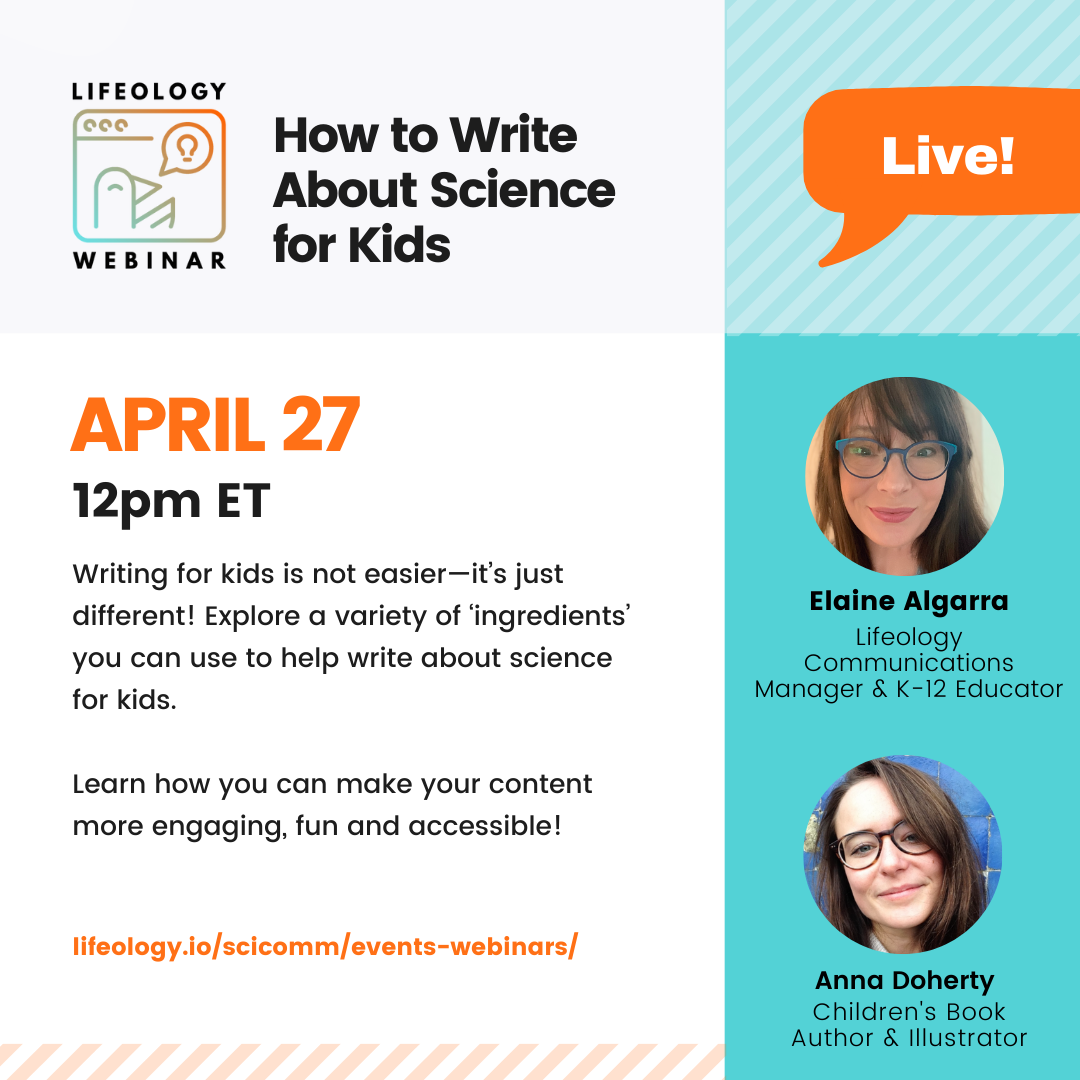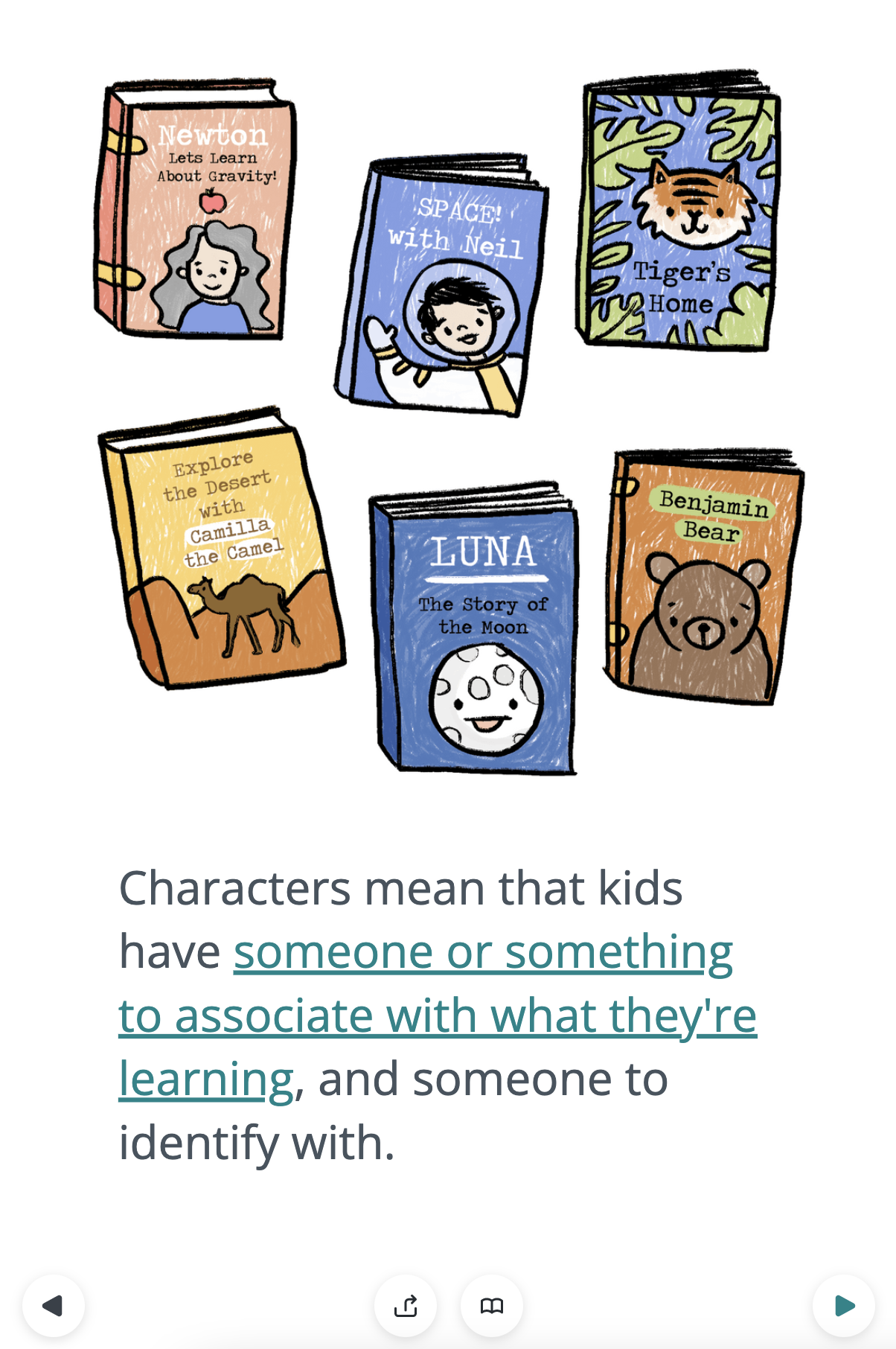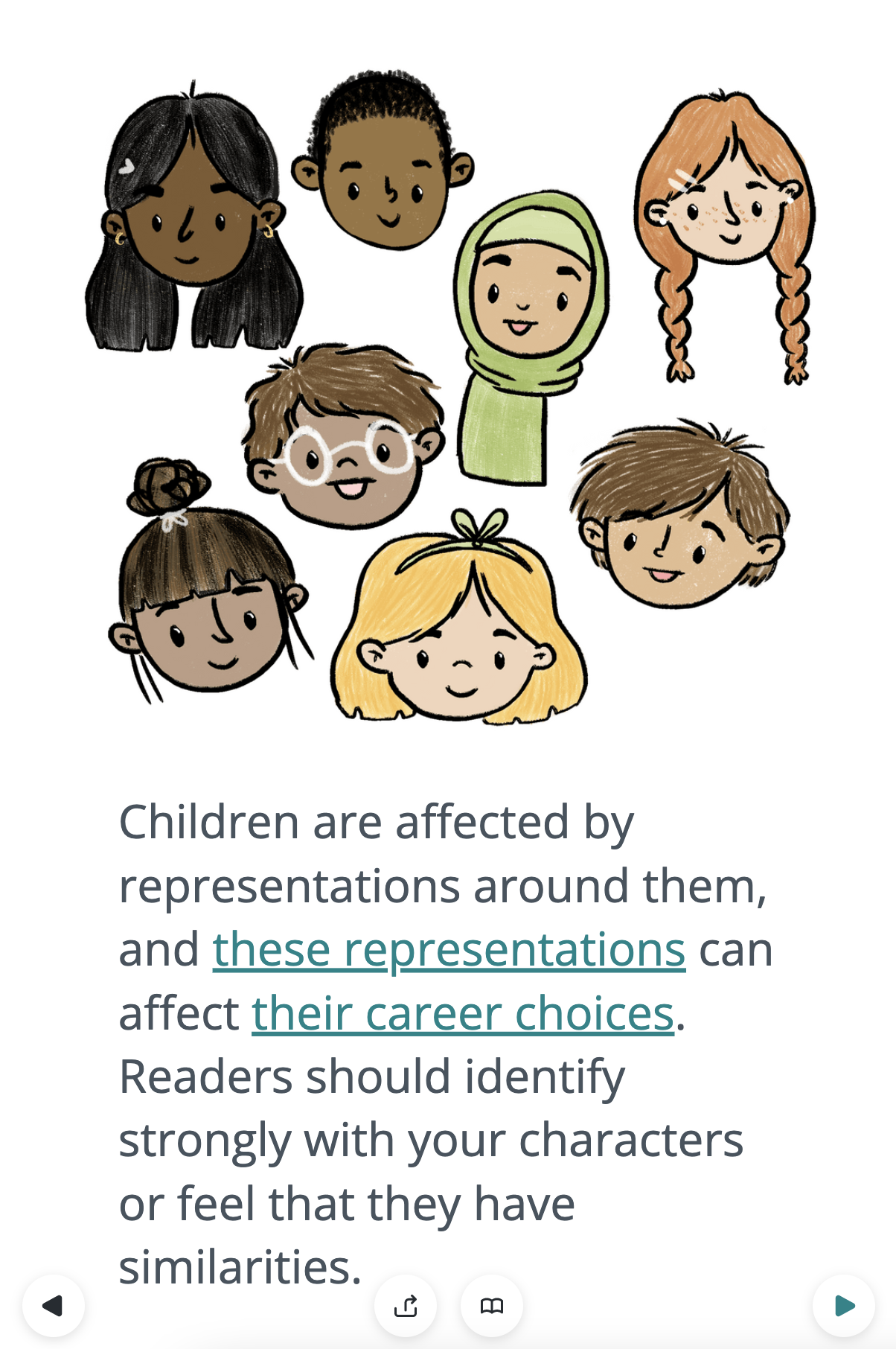The Lifeology SciComm Program has a new flashcard course to help people write about science for kids! Learn how to make your content engaging, accessible, and overall, fun—specifically for kids! And there’s a Lifeology live webinar on the topic later this month, too!
Screenshot of a card from the “How to Write About Science for Kids” course.
Elaine Algarra and Anna Doherty are the creators of this course. Elaine brings over 20 years of K-12 teaching experience to the course, and she’s also an artist! She is currently Lifeology’s Communication Manager. Anna Doherty is an author and illustrator of several children’s books. She also works on other projects as a freelance illustrator (including Lifeology courses!)—she enjoys working on non-fiction projects and drawing for things that can educate people.
“It doesn’t matter if it is science or non-fiction in general. Writing for kids sounds like it may be easier than writing for an adult audience. It’s not! Try and put yourself into the mindset of your readers. Kids love a good story, and they want to read something interesting and love “insider knowledge.” What type of questions might a kid have about the topic you’re writing about? How can you make that topic fun?” -Elaine Algarra
About the Course
Together, Elaine and Anna created the beautiful “How to Write About Science for Kids” course. The course walks readers through writing for kids likening it to baking a cake—specifically looking at the different layers often found in a cake.
The different layers of the “science writing for kids cake” represent different concepts to keep in mind when writing for kids. The first layer of the cake is all about knowing your target audience, which includes kids and adults, too! This may take some background research by talking to your audience to find out what interests them.
After learning more about your audience, it’s time to think about the big ideas of your story! This includes the main points and any new words or concepts you may introduce through your writing. Make sure that your writing is clear, concise and kid-friendly! This does not mean shying away from introducing science words. Instead, you should think about how you are going to explain that word in a way that is meaningful for a kid!
This Lifeology course couldn’t be written without mentioning the use of visuals in your science writing for kids—illustrations, photos, or other visuals can help keep kids engaged. If your project doesn’t lend itself well to visuals, a rich description can also help kids visualize the story with their imagination!
And you probably know what is next…storytelling! Storytelling is great in science writing—and science writing for kids is no different. Characters and storylines help kids associate someone or something with what they’re learning!
Screenshots of three cards from the “How to Write About Science for Kids” course.
And when you’re creating these characters and storylines, push back against stereotypes. Aim to have diverse characters in a variety of representations to help your audience connect with them! It’s important that kids see themselves represented in stories. It’s also important to be inclusive—consider different abilities, home lives, and experiences that kids may or may not have. Never make assumptions!
Additionally, use interactive tools in your science writing for kids! One way you can interact with your audience through your writing is by speaking directly to them with the second person, or “you” perspective.
“Also, don’t forget kids make great reviewers. Consider bouncing your ideas off kids in your network. If your writing misses the mark, be prepared for valuable, honest—and blunt feedback!” -Elaine Algarra
And last but not least, have some fun! The course ends with a bunch of different ways you can “sprinkle” fun into your science writing for kids. There is even an included checklist to help plan a piece of kid-friendly science content.
Check out the course now and share it with your networks!
A Webinar
And if you want to learn even more about writing about science for kids, you’re in luck! On April 27th at 12pm ET, we have a Lifeology live webinar! The webinar, “How to Write About Science For Kids” is also presented by Elaine Algarra and Anna Doherty.
We hope you’ll join us for this exciting webinar! You can register now.









